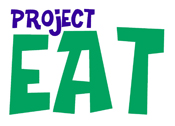 New research from the School of Public Health shows snacking among U.S. adolescents is a risk factor for poor diet, but is not consistently related to being overweight.
New research from the School of Public Health shows snacking among U.S. adolescents is a risk factor for poor diet, but is not consistently related to being overweight.
The study, conducted as part of the school’s Project EAT (Eating and Activity among Teens) research, was recently published in the Journal of Nutrition and named an “Editor’s Pick.”
“Adolescents frequently consume snacks and therefore it is important to make sure the foods and beverages they consume for snacks contribute to meeting dietary recommendations for health,” says lead author Nicole Larson.
Overall, snacking was associated with higher daily consumption of calories, sugar-sweetened beverages, and fast-food and lower amounts of fruit and vegetables.
Additional study findings show adolescents typically consume a total of four snacks a day, eat snacks prepared away from home about three times a week, and have more than two servings of energy-dense snack foods (e.g., chips, candy) on a given day.
The results also suggest that the majority of adolescents — 69 percent — sometimes, usually, or always consume snacks while watching television.
Larson says the study results have important implications for parents, health providers, and policy makers. Health providers can offer guidance to young people for making healthy food and beverage choices between meals. Providers and parents can also work to advocate for policies to support healthy food and beverage choices in schools and other environments — such as parks and recreation centers — where adolescents spend their time. They can also make a difference by advocating that food and beverage marketing targeted to adolescents should promote only healthy foods and portion sizes.
